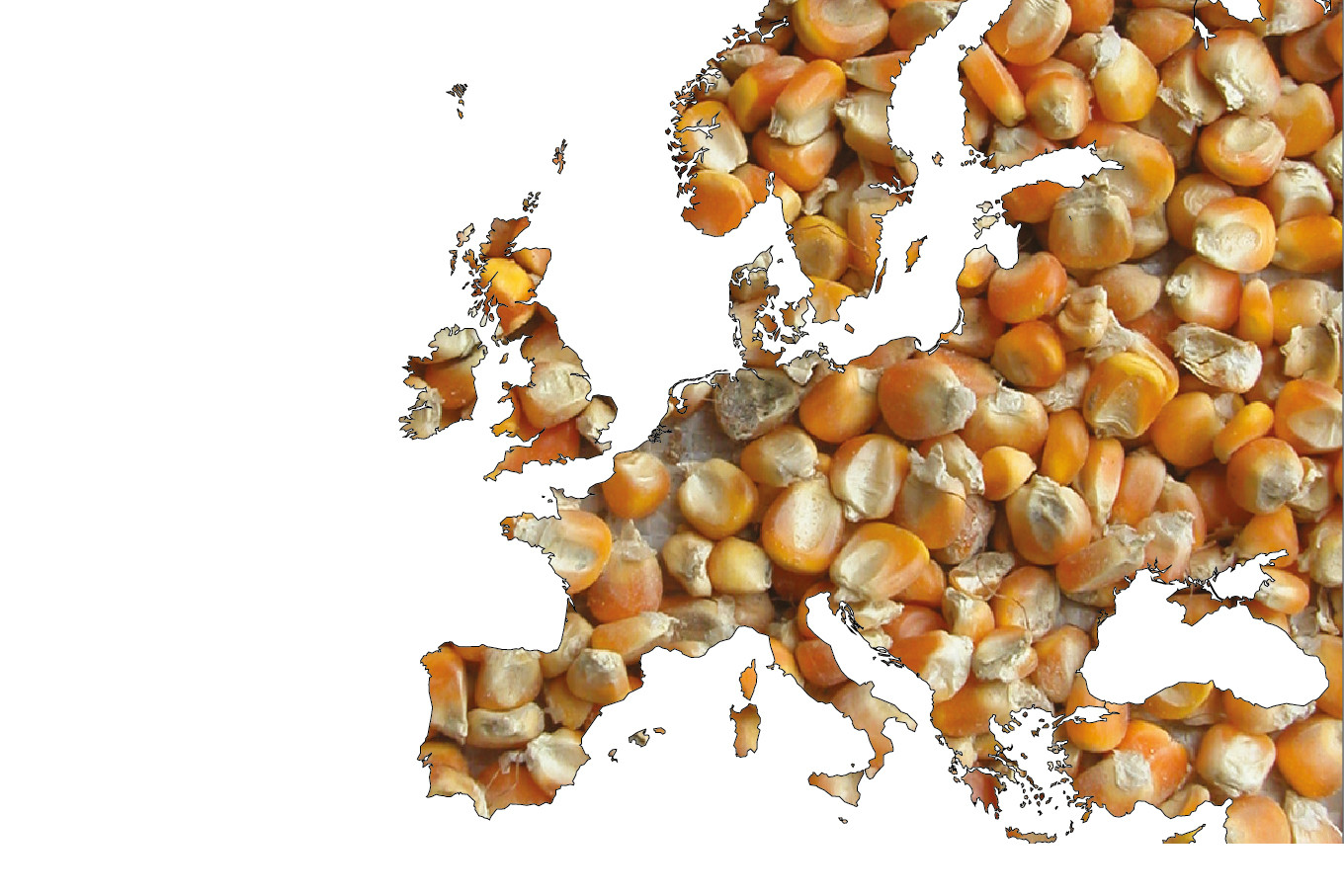High levels of mycotoxins in Europe

Accurate monitoring and risk assessment of mycotoxin contamination are vital tools to help minimise the negative impacts on production and product quality. Alltech’s latest Harvest Analysis indicates high levels of mycotoxins in Europe.
Mycotoxin contamination is now recognised as a global issue in agricultural production, especially in the livestock sector. Improvements in analytical technology, as well as increased monitoring, have allowed for substantial research and development, vastly increasing our understanding of what influences contamination and the likely effects on animals and humans. As consumers become more concerned about feed safety and quality, the ability to quantify and address the issue of contamination becomes increasingly important.
Mycotoxins are secondary metabolites with a low molecular weight that are produced by moulds that have been stressed by environmental and management factors, such as extreme temperatures, drought, flooding and harvesting techniques. In low concentrations, they are toxic to animals and exhibit strong physicochemical resistance. One mould is capable of producing several mycotoxins, and one mycotoxin may be produced by several different moulds.
3 mycotoxin groups
There are 3 main mould groups of concern:
- Fusarium,
- Aspergillus
- Penicillium
Fusarium moulds are of field origin, meaning that they proliferate on the crop while it is still in the field. Storage moulds, such as Aspergillus and Penicillium, develop, as the name suggests, during storage of the crop or grain. This includes storage during ensilage. While Aspergillus is less of an issue in the northern parts of Europe, levels of its associated mycotoxin, aflatoxin, are regulated under European Union law. In terms of negative effects on-farm, the Fusarium and Penicillium mycotoxins are by far the most problematic in Europe. However, in recent years, changing climates and global trade have increased the risk and presence of the more potent aflatoxins.
Mycotoxins compromise animal health and performance; many mycotoxins impair the immune system. Signs of mycotoxin challenge include reduced performance, poor growth, swollen joints, dull appearance and lethargy, as well as reproductive abnormalities. Tracking mycotoxin occurrence in crops used in animal diets has therefore become a key component of creating a successful nutrition programme. By mitigating risk through early on-farm diagnostics, agricultural producers can improve overall product quality and animal performance.
Alltech has over 20 years of experience in managing mycotoxins, including the innovative development of accurate methods to identify and quantify multiple mycotoxin contamination within a large range of feed ingredients used across the world. Utilising LCMS/MS technology, the Alltech 37+ mycotoxin analysis is able to detect and quantify the presence of more than 40 different mycotoxins in a single sample in one test. Since its inception, the analytical services laboratory has completed over 20,000 tests, with 96.4% of samples containing at least one mycotoxin. This state-of-the-art facility carries out an annual, global survey of feed ingredients to assess overall risk of contamination by region. This article will focus on the Alltech 2017 European Harvest Analysis results.
Mycotoxins in European feedstuffs
Extreme weather events pose one of the greatest risks to mycotoxin production in crops, and this year, many parts of Europe experienced heat waves, rain deficit and drought. During the immediate pre-harvest season, the UK, Ireland, parts of Scandinavia (including Denmark) and the Baltics suffered unusually high rainfall. During the harvest season (August to September), Southern and Eastern Europe continued to experience drought and heat waves, respectively. Conversely, rain continued to fall in the northern UK, Ireland and Scotland, as well as some of Scandinavia and the Baltics. The following survey is comprised of samples from August to November 2017.
Grains
The 136 grain samples analysed included wheat, barley and maize (corn). The number of mycotoxins per sample averaged 2.7, with type B trichothecenes and fumonisins being detected in approximately 50% of all samples. Maize was the most highly contaminated of the 3 grains, with samples containing an average of 3.5 mycotoxins. Barley, while having fewer mycotoxins per sample, showed a wider range of abundance, with all major mycotoxin groups represented (Figure 1). As a result, barley poses a high risk to all species, partly because of the levels of type A trichothecenes.
Figure 1 – Mycotoxin contamination profile and relative risk ofEuropean barley samples in 2017 crop, analysed using LCMS/MS (Alltech 37+ mycotoxin analytical services laboratory).

Wheat primarily contained type B trichothecenes and fumonisins, which represents an issue for pigs, as well as young animals of all species, because of levels of the former. Ruminants are less sensitive to type B trichothecenes (the deoxynivalenol [DON] family), and wheat therefore only poses a low-to-moderate risk for adult animals. Delays due to weather reduced the number of samples available for harvest, but out of a total of 17 maize samples, more than three quarters (88%) contained fumonisins, resulting in a high risk for all classes of pigs, given their sensitivity to this group of mycotoxins. Again, young stock are also at risk. In terms of overall risk, approximately 75%, 64% and approximately 81% of all grain samples were classed as low-to-moderate risk for poultry, pigs and ruminants, respectively.
Silages
Fewer silage samples (n=14) were analysed compared with grains, but the number of mycotoxins per sample averaged 4.86, with over 70% of samples containing more than four mycotoxins. Maize silage demonstrated a higher level of contamination compared with grass silage at an average of 5.29 versus 3.17 mycotoxins per sample, respectively. Trends for levels and types of mycotoxins were similar for both grass and maize silage, with typical abundance of type B trichothecenes, fusaric acid and fumonisins (Figure 2). However, type A trichothecenes and Penicillium mycotoxins appeared more prevalent this year, possibly indicating greater instability of ensiled forage and an increased risk of negative impacts on livestock. Subsequently, over 70% of silages represent a high risk to ruminant animals. New and emerging mycotoxins are being continually detected, and one in particular appears to be prevalent in silage samples this year. Citrinin, from the ochratoxin group, was detected in 29% of grass silage samples. This is important to note because this mycotoxin can have negative effects on kidney and rumen function in ruminants.
Figure 2 – Frequency of mycotoxin groups in 2017 European grass and maize silage samples (n=14), analysed using LCMS/MS (Alltech 37+ mycotoxin analytical services laboratory).

Proactive approach to mycotoxins
The results from this years’ analysis show that barley poses the greatest threat from grain feed, and silages are demonstrating poor stability, leading to the increased occurrence of the more potent type A trichothecenes. Because of the threat from mycotoxins in 2017 crops, a proactive approach to mycotoxin management is required to help producers minimise risk.











